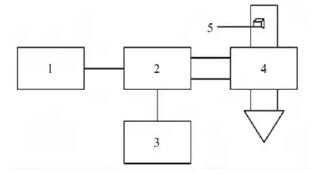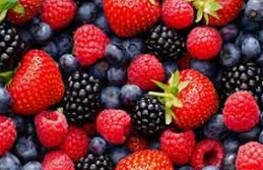
- Shandong Microwave Machinery Co.,Ltd.
- To be the Leader of microwave drying and edible oil refining equipments Manufacturer
Home> Company News> Microwave foam drying characteristics of berry pulp
- AddressNo. 225, Huangqiao Village, Beiyuan, Tianqiao District, Jinan, Shandong, China
- Factory AddressNo. 225, Huangqiao Village, Beiyuan, Tianqiao District, Jinan, Shandong, China
- Phone(Working Time)+86 0531 85064681
- Phone(Nonworking Time)0086-15020017267
- Fax+ 86 0531 85064682
Microwave foam drying characteristics of berry pulp
2019-01-10 11:12:05Abstract: in order to reveal the drying characteristics of berry microwave foam, the effects of microwave foam drying conditions on pulp temperature, water content and anthocyanin content were studied.

The results show that in microwave drying equipment, the material temperature rises rapidly in the early stage of drying, and rises slowly in the late stage of drying; the moisture content decreases slowly in the early stage of drying and falls rapidly in the late stage of drying; the logarithm of temperature and moisture content ratio is linearly correlated with the anthocyanin content. The results can provide theoretical basis for controlling the degradation of active ingredients in drying process.
Key words: Berry microwave drying; microwave foam drying; temperature; water content; anthocyanin; degradation

Microwave assisted foam drying technology has the advantages of fast heat transfer, large evaporation area, fast drying speed and low drying temperature. It is suitable for fast drying of food materials with high heat sensitivity, high viscosity and high sugar content.
However, the content of anthocyanins and other active components decreased during the microwave assisted foam drying, which affected the antioxidant activity of dried fruits. Therefore, the effect of microwave assisted foam drying on the anthocyanin content of berries was studied, and the reasons for the degradation of anthocyanins during microwave foam drying were confirmed, which could provide a theoretical basis for the application of microwave foam drying technology.
At present, domestic and foreign scholars have done some research on the influence of microwave drying conditions on the content of active substances and antioxidant activity, such as lotus petals, honeysuckle, purple corn, strawberry, sweet potato and so on. It is found that microwave drying process reduces the content of anthocyanins and other active substances and antioxidant activity.
Nuray Akbudak et al found that microwave drying power directly affected the ascorbic acid content of dried coriander. Ghasem Yousefi and other established models of raspberry phenolic content, anthocyanin content and antioxidant capacity and processing conditions, and Sun Yu et al. In microwave assisted foam drying conditions on the anthocyanin and other aspects of the preliminary study, confirmed that microwave assisted foam drying process anthocyanin content decreased.
Zhang Baohui and other studies showed that the degradation of anthocyanin in berries was in accordance with the first-order reaction kinetics. The effect of temperature and moisture content on anthocyanin content after microwave foam drying has not been reported.
In this study, raspberry was used as the research material. Through studying the change rule of moisture content, temperature and anthocyanin content in microwave foam drying process, the cause of degradation of anthocyanin in microwave foam drying process was revealed, so as to provide theoretical basis for controlling the degradation of active ingredients in microwave foam drying products.
 High efficiency food beverage factory stone paper production line
High efficiency food beverage factory stone paper production line Factory price Fully automatic Machine PP/PS Plastic Sheet Production Line
Factory price Fully automatic Machine PP/PS Plastic Sheet Production Line used deformered bar rolling mill production line
used deformered bar rolling mill production line Manufacturing plant automatic factory puffed sticky rice cracker production line
Manufacturing plant automatic factory puffed sticky rice cracker production line Production Line Pp Ppr Plastic Pipe Making Machine 20-63mm Multi-layer Extrusion Production Line For Water Supply
Production Line Pp Ppr Plastic Pipe Making Machine 20-63mm Multi-layer Extrusion Production Line For Water Supply